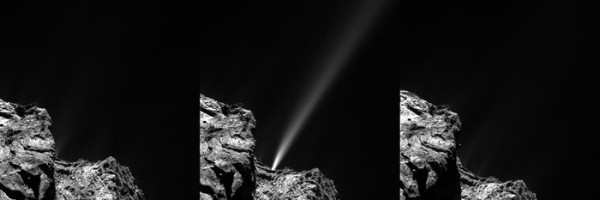The European Space Agency's Rosetta mission is now witnessing dramatic activity on the comet that the probe has been following since August last year, where it is now reaching perihelion, or its closest point near the sun during its orbit. The approach has proven to be so powerful that the comet has already pushed away the onslaught of solar wind.
The Comet 67P/Churyumov-Gerasimenko will reach its perihelion on August 13, Thursday during its 6.5 year orbit. In the past months, its approach to the sun has already warmed its icy surface turning it into gas escaping into outer space, in a process called sublimation.
Scientists believe that this perihelion is crucial as intense solar energy increases to the parts of the comet that were previously hidden in shadows.
The comet's overall activity is now expected to reach its peak in the weeks following the closest approach to the sun, where sudden and unpredictable outbursts from the comet can happen any time which was already observed earlier in the mission.
The Rosetta probe captured the most dramatic outburst yet on July 29, when several of its scientific instruments detected this activity from 116 miles away from the comet. The instruments captured an image of these jets of gas streaming from its nucleus, with increased levels of dust from the comet.
Rosetta also discovered that this activity was so intense that this outburst already pushed away the solar wind magnetic field around the comet's nucleus.
A series of images was taken by Rosetta's OSIRIS camera where photos reveal that defined jet like emissions were seen from the comet's neck called the Anuket region. The image was taken at 9:24 A.M. EDT where the camera team estimates that the jet material is ejected at 33 feet every second or 10 miles per second, even faster.
According to OSIRIS team member, Carsten Güttler from the Max Planck Institute for Solar System Research in Göttingen, Germany, this is the brightest jet the team had witnessed so far where other jets are usually fainter compared to the nucleus.
According to ROSINA principal investigator, Kathrin Altwegg from the University of Bern, this quick look at the scientific instruments' measurements from Rosetta reveal that this outburst is truly fascinating as it also hints heavy organic material apart from its ejected gas and dust.


